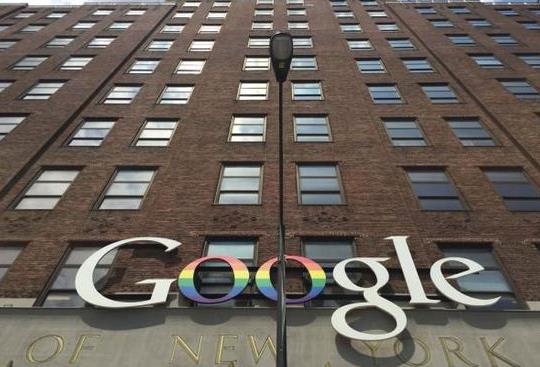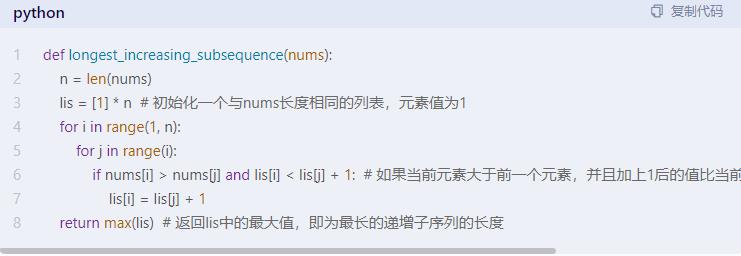又有我们辅导的又一个同学成功上岸谷歌啦!进谷歌真的不难㊙诀全在这里了
在po出谷歌面试杀手锏之前,同学们一定要先搞清楚谷歌的面试流程!

Application Submission Technical Phone Screen :电话面试,一般有1-2轮,会根据过往经历考察统计学知识、数据分析硬技能,同时也会有一些行为面问题。 Onsite Interviews :现场一般4轮面试coding3轮behavior1轮考察相应的编程和解决问题的能力。
重点啦!现场面试的时候会面临Coding Analytical Challenges,也就是要进行白板面试,即要在白板上写出解决方案相应的代码,一般白板面试很多同学都会很紧张,但是别怕白板面试多加练习理清逻辑就
Google虽然不像Amazon一样狂热于企业文化,但也是很看重对候选人Behavioral方面的考察,所以同学们一定要保证全流程在线
面试全流程中,现场白板面试的考察是分量最重也是最难的部分。不过这也正是成功上岸谷歌的秘诀所在疯狂刷题练习就能拿下
根据面试流程将其它的Google DS高频面试题整理到了一起,不仅包括全部面试题还包含了上岸同学的亲身经验分享
真题
Top 50 Google InterviewQuestions for Data Science Roles Introduction Cracking the code for a career at Google is a dream for many aspiringdata scientists. But what does it take to clear the rigorous data scienceinterview process? To help you succeed in your interview, we compileda comprehensive list of the top 50 Google interview questions coveringmachine learning,statistics, product sense, and behavioral aspects.Familiarize yourself with these questions and practice your responses.They can enhance your chances ut p;cssing the interviewers andsecuring a position at Google. Table of contents Google Interview Process for Data Science Roles Top 50 Google Interview Questions for Data Science Google Interview Questions on Machine Learning and Al Google Data Scientist interview Questions on Statisticsand Probability Google Interview Questions on Coding0 Google Interview Questions on Product Senseo
解答
Google面试数据科学职位的问题,并提到了机器学习、统计学、编码和产品感等方面的面试问题。
对于如何准备Google的面试,
提前了解Google:深入了解Google的业务和文化,以及在数据科学领域的项目和挑战。这将帮助您更好地理解面试官可能提出的问题,并为您展示对Google的兴趣和准备程度。 准备技术知识:对于机器学习、统计学、编码等方面的知识,需要深入理解和掌握。可以通过阅读相关书籍、在线课程和博客文章来复习和巩固这些知识。 练习面试技巧:面试过程中不仅需要展示技术知识,还需要展现沟通技巧、解决问题的能力以及对复杂问题的思考方式。可以通过模拟面试、参加面试辅导课程等方式来提高面试技巧。 关注细节:在面试过程中,注意细节非常重要。这包括准时到达、表现出积极的态度、注意回答问题的清晰度和准确性等。 持续学习:数据科学是一个快速发展的领域,要保持对最新技术和趋势的了解,并能够将这些知识应用到实际工作中。 至于您提到的具体问题,由于您没有明确提出具体的问题,我无法给出确切的答案。如果您有关于Google面试的具体问题或对某个主题有疑问,请提供更多详细信息,我将尽力帮助您解答。
Google Interview Process for Data Science Roles Getting through the Google data scientist interview is an excitingjourney where they assess your skills and abilities. The process includesdifferent rounds to test your knowledge in data science, problem-solving, coding,statistics, and communication. Here's an overview ofwhat you can expect: Stage Description ApplicationSubmit your application and resume through Google's careers website toSubmissioninitiate the recruitment process.Technical Phonelf shortlisted, you'll have i 2 ohone screen to evaluate your codingScreenskills, statistical knowledge, ana experience in data analysis.Onsite Interviews Successful candidates proceed to onsite interviews, which typically consistof multiple rounds with data scientists and technical experts, Theseinterviews dive deeper into topics such as data analysis, algorithmsstatistics,and machine learning concepts. CodingAnalyticaiChallenges andYou'il face coding challenges to assess your programming skills andanalytical problems to evaluate your ability to extract insights from data. SystemDesign Some interviews may focus on system design, where you'll be expectedandBehavioral to design scalable data processing or analytics systems Additionallyinterviewsbehavioral interviews assess yourteamwork. communication, andproblem-solving approach. Hiring Committee The feedback from the interviews is reviewed by a hiring committee, whichReviewcollectively makes the final decision regarding your candidacy.
Google面试数据科学职位的过程包括几个阶段。以下是对这些阶段的详细解释:
- 申请阶段:您需要在Google的招聘网站上提交简历和申请,这是整个招聘过程的开始。
- 技术电话面试:经过初步筛选后,您可能会接到一个技术电话面试,评估您的编程技能、统计知识和数据分析经验。
- 现场面试:如果通过电话面试,您将被邀请参加现场面试。这些面试通常由多轮组成,与数据科学家和技术专家进行交流。面试内容将深入探讨数据分析、算法、统计和机器学习概念等主题。
- 编程和分析挑战:您可能会面临一些编程挑战和数据分析问题,以评估您的编程技能和从数据中提取洞察的能力。
- 系统设计面试:一些面试可能侧重于系统设计,您需要设计可扩展的数据处理或分析系统。
- 行为面试:除了技术面试外,您还可能需要进行行为面试,评估您的团队合作、沟通和解决问题的能力。
- 招聘委员会审查:最后,招聘委员会将根据所有面试的反馈做出最终决定,决定是否录用您。
Google Interview Questions on Machine Learningand Al 1.What is the difference between supervised andunsupervised learning? A Supervised learning involves training a model on labeled data wherethe target variable is known. On the other hand, unsupervised learningdeals with unlabeled data, and the model learns patterns and structureson its own. To know more, read our article on supervised andunsupervised learning. 2. Explain the concept of lr i t descent and its rolein optimizing machine learning models. A. Gradient descent is an optimization algorithm used to minimize theloss function of a model. It iteratively adjusts the model's parametersby calculating the gradient of the loss function and updating theparameters in the direction of the steepest descent. 3.What is a convolutional neural network (CNN), andhow is it applied in image recognition tasks? A. A CNN is a deep learning model designed explicitly for analyzingvisual data. It consists of convolutional layers that learn spatial
CNN在图像识别任务中的应用非常广泛。以下是一些具体的应用场景:
- 物体检测:CNN可以用于检测图像中的物体,并确定其位置和大小。通过训练CNN对大量标注的图像数据进行学习,它可以学会从图像中识别出特定的模式,从而检测出物体。
- 图像分类:CNN也可以用于对图像进行分类。通过对图像进行特征提取,CNN可以将其分类到不同的类别中。这种分类方法可以用于各种场景,如人脸识别、物体识别、场景分类等。
- 语义分割:CNN还可以用于图像的语义分割,即将图像中的每个像素分配给特定的类别。这种分割方法可以帮助我们更好地理解图像的内容,并在某些应用中(如自动驾驶)非常重要。
这些应用只是CNN在图像识别领域的一部分,实际上CNN还有很多其他的用途,例如生成对抗网络(GANs)、超分辨率等。
11. Explain the concept of correlation and itsinterpretation in statistics. A. Correlation measures the strength and direction of the linearrelationship between two variables. It ranges from -1 to +1, where -1indicates a perfect negative correlation, +1 indicates a perfect positivecorrelation, and 0 indicates no correlation. The correlation coefficienthelps assess the degree of association between variables 12.What are confdence intervals, and how do theyrelate to hypothesis testing? A Confidence intervals provide a range of plausible values for apopulation parameter based on sample data. They are closely relatedto hypothesis testing as they can test hypotheses about populationparameters by examining whether the interval contains a specific value. 13. What is the difference between Type I and Type llerrors in hypothesis testing? A. Type I error occurs when a true null hypothesis is rejected (falsepositive). while Type Il error occurs when a false null hypothesis is notrejected (false negative). Type l error is typically controlled by selecting
解释相关性的概念及其在统计学中的解释。 相关性是指在两个变量之间存在的线性关系的强度和方向。它的取值范围为-1到+1,其中-1表示完美的负相关,+1表示完美的正相关,0表示没有相关性。相关性系数有助于评估变量之间的关联程度。
什么是置信区间,它们与假设检验有何关系? 置信区间是根据样本数据为总体参数提供的一系列可能的值。它们与假设检验密切相关,因为它们可以通过检查区间是否包含特定值来测试关于总体参数的假设。
假设检验中的第一类错误和第二类错误有什么区别? 第一类错误(Type I error)发生在当真正的零假设被拒绝时(即假阳性)。而第二类错误(Type II error)发生在当错误的零假设没有被拒绝时(即假阴性)。第一类错误通常通过选择适当的显著性水平来控制。
20. Implement a Python class named Stack with pushand pop operations. class Stack: definit (self): self,stack= def push( self, item): self.stack.append(item def pop( self): if self.is empty(): return None ceturn self .stack.pop( def is empty( self): return len(self.stack) 21. Given a list of integers, write a Python function tofind the longest increasing subsequencenotnecessarily contiguous) within the list. def longest increasing subsequence(nums n= len(nums lis-11* for i in range(1 n): for j in rangei
Python类,实现了栈的基本操作:push和pop。

这是一个Python函数,用于找到给定整数列表中最长的递增子序列(不一定是连续的)。
def longest_increasing_subsequence(nums): n = len(nums) lis = [1] * n # 初始化一个与nums长度相同的列表,元素值为1 for i in range(1, n): for j in range(i): if nums[i] > nums[j] and lis[i] < lis[j] + 1: # 如果当前元素大于前一个元素,并且加上1后的值比当前元素的值更长,则更新当前元素的值 lis[i] = lis[j] + 1 return max(lis) # 返回lis中的最大值,即为最长的递增子序列的长度

这个函数使用了动态规划的思想,使用一个列表lis来保存以每个元素结尾的最长递增子序列的长度。通过两层循环遍历所有可能的子序列,并更新列表中的值。最后返回列表中的最大值即可。
Google Interview Questions on Product Sense 27.How would you design a recommendation systemfor an e-commerce platform like Amazon? A. To design a recommendation system, I would start by understandingthe user's preferences, historical data, and business goals, I recommendcollaborative techniques, content-based filtering, and hybridapproaches to personalize recommendations and enhance the userexperience. 28. Suppose you are taske! :vith improving userengagement on a social media platform. What metricswould you consider,and how would you measuresuccess? A. I would consider metrics such as active user count, retention, timespent on the platform, and user interactions (likes, comments, shares)Measuring success would involve tracking changes in these metricsbefore and after implementing engagement initiatives and analyzinguser feedback
设计一个在线音乐平台,提供推荐功能,请提供具体的实现方案。
要设计一个在线音乐平台,提供推荐功能,我们需要考虑以下几个方面:
- 数据收集和整理:我们需要收集各种音乐数据,如歌曲的名称、艺术家、流派、风格、歌词等,并对这些数据进行整理和分类。
- 用户行为数据:我们需要记录用户在平台上的行为数据,如他们听了哪些歌曲、喜欢哪些歌曲、搜索了哪些歌曲等。
- 推荐算法:我们可以使用基于内容的推荐算法、协同过滤推荐算法或者混合推荐算法等来为用户提供个性化的音乐推荐。
- 推荐展示:我们可以根据用户的行为数据和推荐算法的结果,生成个性化的音乐推荐列表,并将其展示给用户。
- 用户反馈:我们需要收集用户的反馈信息,如他们对推荐结果的满意度、是否喜欢某个歌曲等,并根据反馈信息对推荐算法进行调整和优化。
具体实现方案如下:
- 数据收集和整理:我们可以从各大音乐平台上获取音乐数据,并将其整理成适合推荐系统的格式。同时,我们也可以从社交媒体、音乐论坛等渠道获取用户对音乐的评价和反馈信息。
- 用户行为数据记录:在平台上为用户提供多种与音乐互动的方式,如播放歌曲、搜索歌曲、添加歌单、评论等,并在后台记录用户的行为数据。
- 推荐算法实现:我们可以使用基于内容的推荐算法,根据用户的行为数据和音乐数据之间的相似度进行推荐。同时,我们也可以使用协同过滤推荐算法,根据其他用户的行为数据和反馈信息来为用户进行推荐。最后,我们还可以将两种算法进行混合,以获得更好的推荐效果。
- 推荐展示:我们可以根据推荐算法的结果,生成个性化的音乐推荐列表,并将其展示给用户。同时,我们也可以为用户提供多种个性化的推荐方式,如每日推荐、每周推荐、相似歌曲推荐等。
- 用户反馈:我们可以向用户收集对推荐结果的满意度、是否喜欢某个歌曲等反馈信息,并根据反馈信息对推荐算法进行调整和优化。同时,我们也可以为用户提供多种反馈方式,如评分、评论、点赞等。
branches of Science and Engineering. Google values some relevant work experience in programming, data handling, engineering or statisticsAdditionally, if you are applying for a data scientist role at Google, you must work on the following technical skills: Statistical languages such as R or Python Data languages such as SQL MySOL or javaScript Data visualization including knowledge in ggplot, d3js and Matplotlib, andTableau Soft skills such as communication, adaptability, problem-solving, strategicmanagement are the most sought-after skills at Google Data Scientistinterviews. Google Data Scientist Interview Questions You ought to be thorough on a wide ra7g2 f topics for Google datascientist interview questions. You won't encounter the same questionsword by word in your Google data scientist interview; the basic requirement is to decipher inherent patterns in these questions. Your goalis to practice the most anticipated Google data scientist interviewquestions so that you are able to solve new problems that employ similarlogic and approaches. Here are some important questions that you mustpractice. Google Data Scientist Interview Questions onMachine Learning and Al 1.What do you understand by supervised and unsupervised machine learning?
- 分支学科:科学和工程。Google重视编程、数据处理、工程或统计等相关工作经验。此外,如果您申请Google的数据科学家职位,您必须具备以下技术技能:
- 统计语言:如R或Python
- 数据语言:如SQL、MySQL或JavaScript
- 数据可视化:包括ggplot、d3js和Matplotlib以及Tableau的知识
- 软技能:如沟通、适应能力、解决问题和战略管理等,是Google数据科学家面试中最受追捧的技能。
- 谷歌数据科学家面试问题 您应该对谷歌数据科学家面试问题的广泛领域有深入的了解。在您的谷歌数据科学家面试中,您不会逐字逐句地遇到相同的问题;基本要求是能够解读这些问题的内在模式。您的目标是练习最受期待的谷歌数据科学家面试问题,以便您能够解决采用类似逻辑和方法的新问题。以下是一些您必须练习的重要问题。
- 谷歌数据科学家面试问题关于机器学习和人工智能
- 您对监督学习和无监督学习有何理解?